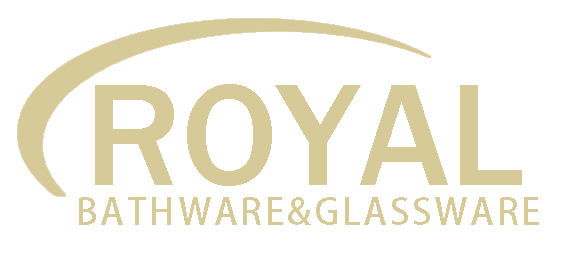FAQ
What are the advantages and disadvantages of various flushing methods for toilets?
The flushing effect mainly depends on the different flushing methods. Generally, there are several flushing methods for toilets:
A. Vortex siphon type: First, the water in the water tank needs to be discharged through the drainage hole at the edge of the toilet to form a vortex of dirt. When the toilet generates siphon through gravity, the dirt is removed. Its advantage is low noise, but its disadvantage is slow sewage discharge speed and occasional residual dirt may remain in the toilet during return water.
B. Direct flush: A common method of sewage discharge in split toilets, which directly uses the flushing force of the drainage in the toilet water tank to push the dirt out of the toilet, and uses the subsequent water volume to replace the water seal. Disadvantages include loud flushing sound, high water consumption, and occasional residual pollution.
C. Jet siphon type: Its function is to use the force of water flow to quickly push water into the bend, thereby promoting siphon generation and accelerating the discharge of pollutants. Due to the fact that the jet hole is located below the water seal, i.e. the jet is carried out underwater, the noise problem is improved, and it plays a good role in preventing odor and splashing water.
D. Jet vortex siphon type: The vortex brings lighter pollutants into the center of the vortex, allowing the cleaned surface to be thoroughly washed, while the jet thrust pushes heavier pollutants into the pipeline. The two combine and are discharged from the toilet with the siphon. The entire process is completed in one go, clean, neat, and thorough.
A. Vortex siphon type: First, the water in the water tank needs to be discharged through the drainage hole at the edge of the toilet to form a vortex of dirt. When the toilet generates siphon through gravity, the dirt is removed. Its advantage is low noise, but its disadvantage is slow sewage discharge speed and occasional residual dirt may remain in the toilet during return water.
B. Direct flush: A common method of sewage discharge in split toilets, which directly uses the flushing force of the drainage in the toilet water tank to push the dirt out of the toilet, and uses the subsequent water volume to replace the water seal. Disadvantages include loud flushing sound, high water consumption, and occasional residual pollution.
C. Jet siphon type: Its function is to use the force of water flow to quickly push water into the bend, thereby promoting siphon generation and accelerating the discharge of pollutants. Due to the fact that the jet hole is located below the water seal, i.e. the jet is carried out underwater, the noise problem is improved, and it plays a good role in preventing odor and splashing water.
D. Jet vortex siphon type: The vortex brings lighter pollutants into the center of the vortex, allowing the cleaned surface to be thoroughly washed, while the jet thrust pushes heavier pollutants into the pipeline. The two combine and are discharged from the toilet with the siphon. The entire process is completed in one go, clean, neat, and thorough.
What is wet dry separation?
It is to separate the shower room from other areas, so that the water from the shower will not splash everywhere, keeping the space outside the shower dry. At present, modern bathroom spaces in European and American countries are generally of a dry wet separation type. According to French customs, when entering the door, one usually sees the dressing room first, followed by a washbasin, toilet, and bathtub, while American style bathrooms will add an additional shower.
In China, some apartments and villas also adopt a design that separates wet and dry. With such a bathroom, the washbasin and toilet area can be kept dry, allowing for the easy selection of bathroom cabinets in various styles and materials without worrying about moisture resistance. This type of bathroom cabinet allows all bathroom supplies to be stored, as well as changing underwear, which can also be placed inside. There is enough space, and even the makeup area can be placed in the bathroom cabinet.
The best way to achieve wet dry separation in smaller bathroom spaces is to install shower doors or shower rooms. It is important to check their water resistance and sealing during purchase and installation to prevent water from overflowing and soaking in the bathroom cabinet during use. Of course, it is also very necessary to maintain ventilation regularly.
In China, some apartments and villas also adopt a design that separates wet and dry. With such a bathroom, the washbasin and toilet area can be kept dry, allowing for the easy selection of bathroom cabinets in various styles and materials without worrying about moisture resistance. This type of bathroom cabinet allows all bathroom supplies to be stored, as well as changing underwear, which can also be placed inside. There is enough space, and even the makeup area can be placed in the bathroom cabinet.
The best way to achieve wet dry separation in smaller bathroom spaces is to install shower doors or shower rooms. It is important to check their water resistance and sealing during purchase and installation to prevent water from overflowing and soaking in the bathroom cabinet during use. Of course, it is also very necessary to maintain ventilation regularly.
© 2010-2024 NanAn Royal Bathware&Glassware Co.Ltd Rghts Reserved.
E-mail: [email protected] [email protected]
NanAn Royal Bathware&Glassware Co.Ltd

WeChat QR code scanning
Contact: Zoe
Telephone:86 13655936198(Zoe)
E-mail:[email protected]
Website:www.bath-ware.com
Mobile&Wechat: 0086 13655936198
Address: No 110, Jinting Road, Shan er Village, Shishan Town, NanAn City, Quanzhou, Fujian Province, China
Contact hotline:
Zoe +86-136-5593-6198

We focus on Bathware and Sanitary ware culture and execute manufacturing standard&process strictly, we also strive for high-level&taste qualify bathroom products.
Contact us